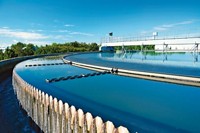Advertisement
Grab your lab coat. Let's get started
Welcome!
Welcome!
Create an account below to get 6 C&EN articles per month, receive newsletters and more - all free.
It seems this is your first time logging in online. Please enter the following information to continue.
As an ACS member you automatically get access to this site. All we need is few more details to create your reading experience.
Not you? Sign in with a different account.
Not you? Sign in with a different account.
ERROR 1
ERROR 1
ERROR 2
ERROR 2
ERROR 2
ERROR 2
ERROR 2
Password and Confirm password must match.
If you have an ACS member number, please enter it here so we can link this account to your membership. (optional)
ERROR 2
ACS values your privacy. By submitting your information, you are gaining access to C&EN and subscribing to our weekly newsletter. We use the information you provide to make your reading experience better, and we will never sell your data to third party members.
Environment
Report Cards For Green Materials
Without clear product information, assembling a green building is guess work
by Melody Voith
November 17, 2008
| A version of this story appeared in
Volume 86, Issue 46
WHEN POTENTIAL home buyers come to the builder David Weekley Homes, one of the quality indicators they look for is a little blue star. “Our clients want to feel like they are doing the right thing, and they are concerned about energy costs,” senior builder Eric Smith says. “They talk about specific programs like Energy Star.”
Smith observes that customers typically do not care about detailed energy-efficiency specifications, but they do want to feel that an outside party has certified a builder’s claims. And that’s why they look for the Department of Energy’s Energy Star logo.
To earn the blue star, homes must be at least 15% more energy efficient than equivalent homes built to international code standards. Plus, they must include additional energy–saving features that typically make them 20 to 30% more efficient than standard homes.
DOE assists builders by publishing guideline specifications for insulation, windows, ductwork, heating and cooling equipment, fixtures, and appliances. Materials that meet the specifications can earn their own Energy Star certification, which makes it easier to piece together the components of an energy–efficient structure.
But the Energy Star label does not imply any sustainability qualities beyond energy efficiency, and it does not provide information that would allow a builder to choose among certified products.
For commercial buildings, the primary green certification standard is the U.S. Green Building Council’s (USGBC’s) Leadership in Energy & Environmental Design program. In addition to energy efficiency, LEED requires that a builder prove sustainable site development, water savings, sustainable materials selection, and a healthy indoor environment.

Selecting products to ensure LEED certification is not simple. Rick Fedrizzi, chief executive officer of USGBC, is bothered that most “green” building materials carry less labeling information than a box of animal crackers.
“If you are going to build a $90 million building, you want to know exactly how it will perform,” Fedrizzi says. “It’s important to understand the mysticism behind the decisions in a green building; they affect the value of the effort.”
Green building consultant and architect Lynn N. Simon works with clients and architects to help manage their strategy for LEED certification. That means she is responsible for evaluating the greenness of building materials. Simon examines materials on the basis of criteria such as carbon footprint, the amount of recycled content, whether they emit volatile organic compounds, the impact of transportation, and use of rapidly renewable resources.
Because not every product will meet every criterion, Simon relies on third-party labels such as Green Seal. Green Seal uses life-cycle assessments and input from manufacturers, purchasing groups, and governments to create standards for specific products like paints and windows. “You can’t take their life-cycle assessment for granted, but it’s too complicated for us to do on our own,” she says.
OF ALL THE YARDSTICKS for measuring a material’s environmental effects, a full life-cycle assessment is the most difficult and is therefore not very common. It requires measuring the impact of all inputs and outputs from raw material extraction, manufacturing, distribution and transportation, construction, and use. It also takes into account reuse, recycling, or disposal in a landfill.
"Most “green” building materials carry less labeling information than a box of animal crackers."
Paul Bogart, programs director for the advocacy group Healthy Building Network, resists the idea that a material’s environmental impact should be boiled down to any single number, label, or rating. “The problem is there are so many labels out there, but most of them are not transparent. We wanted a tool that will look at the range of different impacts and allow users to make their own decisions,” Bogart says.
The Healthy Building Network’s efforts are now part of a collaboration called the Pharos Project. The project will grade materials according to attributes in three categories: health and pollution, environment and resources, and social justice and community.
Bogart points out that different clients have different needs. The report card and an associated database will let them search on the basis of a factor such as indoor air quality and find the best product, or the client can have multiple priorities and balance them. “It doesn’t slap on a label saying, ‘This is okay,’ ” he says, “but rather shines a light on the product and says, ‘Here’s everything we know about this product.’ ”
Gathering all the information to go into the Pharos database will be a monumental task, Bogart acknowledges. To be valuable, it has to allow users to understand and balance the trade-offs among various goals—for example, between the energy efficiency of polystyrene insulation and the possible indoor air quality effects of its flame-retardant additives.
Another barrier is the quality and availability of information. “We haven’t been convinced that there is a consistent, reliable formula to measure how much energy goes into the production of a product,” Bogart says. His job is further complicated by building material manufacturers who are unwilling to supply full ingredients lists for their products.
The Pharos Project is a work in progress. But the participants hope that it will be available for a wider audience in the middle of 2009. So far, the effort has been supported by grants. Bogart promises that more details are coming about how the network will make the database self–sustaining. “Our business model for when we’re further along remains to be determined,” he says.






Join the conversation
Contact the reporter
Submit a Letter to the Editor for publication
Engage with us on Twitter